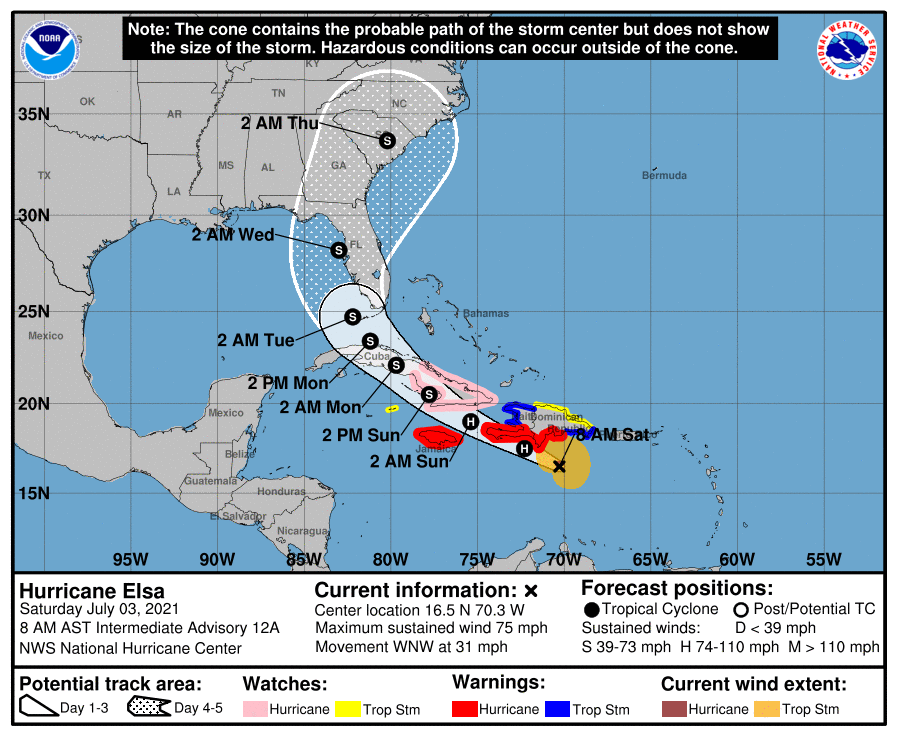As of the 8am on July 3rd, Hurricane Elsa’s center was at 16.5N and 70.3W, placing it south of the Island of Hispaniola (Haiti and the Dominican Republic). The storm has top sustained winds of 75 mph, and is headed WNW at 31 mph. The current storm track suggests the storm could hook out into the Gulf of Mexico, then curve back to the East, landing a direct hit on the Florida Coast somewhere between the Naples and Tampa areas.

Florida meteorologists can’t seem to agree on exactly what the storm will do. Some claim that the fast moving nature of the storm has led to a weakening of it’s rotational force, and that the storm could begin to break apart in the next few days as it makes contact with the islands of Cuba and Hispaniola. Others have pointed out that abnormally high water temperatures in the Gulf of Mexico, a condition that has persisted since March of 2021, could cause the storm to strengthen substantially if it starts to slow down. If the storm passes rapidly over Cuba and Hispaniola, and then begins slowing substantially over open waters, it could start to regain strength as it pulls back East towards the Florida coast.